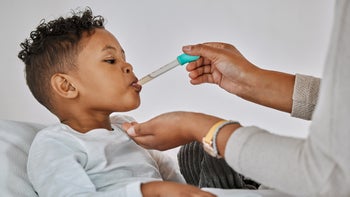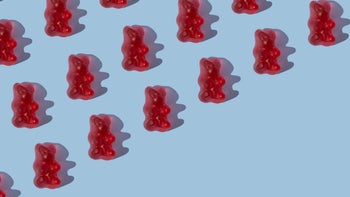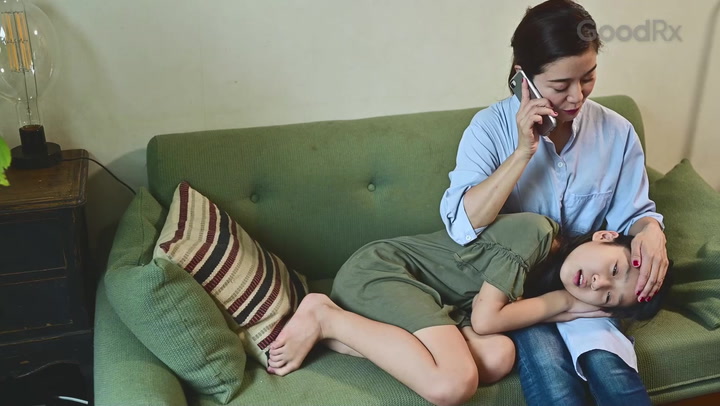
The 5 Most Common Causes of Chest Pain in Kids
Key takeaways:
Chest pain in kids is a common complaint that may cause you to worry. Fortunately, it is not usually dangerous or related to a heart problem.
But, there are important warning signs to look out for that may signal a serious problem. If your child has dizziness, fainting, or trouble breathing, there may be a cause for concern.
Let your child’s healthcare provider know if they have symptoms of chest pain. They can help find the cause and recommend any treatment if necessary.

Chest pain can be a concerning symptom for children and their families. This is often because of fear and worry about important organs — the heart and lungs.
With the connection between chest pain in adults and heart attack, chest pain in anyone can be scary. But chest pain in kids is rarely related to their hearts and is usually not dangerous. This is especially true if they are typically healthy. But, it is important to look for warning signs that may hint at a serious cause for a child’s chest pain.
What causes chest pain in kids?
The causes of chest pain in kids can vary, and it’s not always serious. Chest pain can happen in any part of the chest. It may stay in one place or move to other areas, such as the back or shoulders. The pain can be described as sharp, dull, throbbing, or aching. It may come on suddenly and unexpectedly, or it may be related to activity. In some cases, the type and location of pain may lend a clue to the cause.
Search and compare options
The five most common causes of chest pain in kids include:
1. Musculoskeletal strain or inflammation
This is the most common cause of chest pain in children. Muscle strains or cramps in the chest wall can be painful. This most often happens from overuse or chest wall trauma (like a bruise). Inflammation in joints or irritation of nerves in the chest wall can also cause chest pain.
Musculoskeletal pain is usually in a specific spot and can be reproduced by pushing on the area. It may happen after starting new exercises, participating in an intense activity, or experiencing physical trauma. This pain usually improves with over-the-counter (OTC) pain medications and rest.
2. Respiratory infections
Chest pain due to a cold or other upper respiratory infection is common. This type of chest pain is not by itself dangerous. Many times, the pain is due to muscle strain from repeated coughing. Pneumonia, a lower airway infection, can also irritate the lining of the lung and cause chest pain.
If you know or think your child has a respiratory infection, let your child’s provider know. It is also important to keep an eye on your child for any signs of trouble breathing. Runny nose, congestion, and fever are often present when a respiratory infection is the source of chest pain.
This type of chest pain usually goes away when the infection has resolved. But, coughing from a respiratory infection can last weeks even after other symptoms improve. And cough suppressant medications can relieve chest wall pain from coughing.
Read more like this
Explore these related articles, suggested for readers like you.
3. Asthma
Asthma is a common disease in children that causes airway swelling and narrowing. Things like allergies, exercise, or a respiratory illness can trigger it. Asthma can lead to breathing problems and chest tightness or pain. It can also cause coughing and chest wall pain, like with a respiratory infection. Chest pain with wheezing and coughing often signals asthma. This is especially likely in a child with a history of it.
Chest pain from asthma improves with inhalers. In more severe cases, steroids like prednisone are helpful. Asthma needs regular medical follow-up to find triggers and the best medications to help treat it.
4. Anxiety
Anxiety can be a child’s normal response to a scary or worrisome situation. Anxiety disorders are extreme, constant, or severe worries that negatively affect everyday life. Anxiety can lead to physical symptoms including chest pain.
Emotional responses to stress and anxiety may be hard for a child to describe. Sometimes, kids describe these emotions as pain. This type of chest pain may be related to specific triggering events.
Addressing anxiety begins with a psychological evaluation and medical treatment if necessary. Lowering your child’s anxiety may improve any anxiety-related chest pain.
5. Gastroesophageal reflux disease (GERD)
Gastroesophageal reflux happens when stomach acid backs up into the esophagus. It’s a normal occurrence at almost every age. Gastroesophageal reflux is so common that it happens in two-thirds of all healthy infants. While fairly uncommon in older kids, some symptoms of acid reflux aren't unusual.
If the acid reflux has other symptoms, it may be gastroesophageal reflux disease (GERD). One commonly associated symptom is chest pain. Burning chest pain after meals and with specific foods suggests gastroesophageal reflux.
Chest pain from GERD has many treatment options. Many of them are OTC remedies. Based on the severity, treatment can include antacids, anti-reflux medications, or dietary changes.
What are rare causes of chest pain in kids?
While the most common causes of chest pain are not usually dangerous, there are some serious causes, too. More worrisome causes of chest pain include:
Heart problems: In less than 1% of cases, chest pain is caused by a serious heart problem in kids. Heart-related chest pain is more likely in kids that are born with heart problems. This is called congenital heart disease. And it may be more common in kids with a family history of heart disease or sudden cardiac death.
Sickle cell disease: Sickle cell disease is a genetic disease that is often diagnosed in childhood. Kids with this condition have abnormally shaped blood cells. This causes the blood cells to clump together and get stuck in the smallest sections of their blood vessels. The limited blood flow keeps oxygen from getting to the body’s tissues and leads to severe pain. This can happen in any part of the body, including the chest.
Pulmonary embolism: A pulmonary embolus is a serious medical condition. This is when a blood clot blocks the artery that delivers blood to the lungs. It can cause chest pain, difficulty breathing, a fast heart rate, and low blood pressure. This is rare in children. But when clots do form, it is usually due to a clotting disorder, cancer, or an implanted medical device (central line). Not moving for long periods of time, like with an orthopedic injury, is another risk factor.
Tumors: In extremely rare situations, chest pain can be related to a tumor or mass inside or on the chest wall. Lymphoma, a rare childhood cancer, may cause a tumor in the top of the chest (mediastinum). This can lead to chest pain and trouble breathing.
How do you diagnose chest pain in kids?
To diagnose your child’s chest pain, the provider will take a medical history and perform a physical exam. It is important to discuss any concerning information in your child’s family history. This includes a history of heart disease, abnormal heart rhythms, or unexpected sudden deaths.
Your child’s health provider may order tests to further examine the chest pain. These may include:
Chest X-ray: This is an imaging test to examine the bones of the chest and the lungs.
Electrocardiogram (EKG): This test looks at the rhythm of the heart.
Echocardiogram (ECHO): An ECHO is an ultrasound of the heart. It looks at the structure and function of the heart.
If a heart-related cause of chest pain is suspected in your child, the provider may give you a referral to a cardiologist. This is a specialist in heart-related issues.
When should you be concerned about your child’s chest pain?
Chest pain that only lasts a few seconds and goes away on its own is unlikely to be serious or need treatment. In very rare circumstances, chest pain in kids needs immediate medical help. In these cases, there are often associated symptoms that are a cause for concern.
Get medical help right away if your child has symptoms like:
Dizziness or passing out
Chest pain related to activity or exercise
Heart palpitations or a fast heart rate
Difficulty breathing
Pain that moves to the left arm or jaw
The bottom line
Chest pain in kids is a common symptom. And it can be scary when your child tells you they have chest pain. Fortunately, it is not usually dangerous. Most cases of chest pain in kids are not heart related.
But don’t ignore their complaints. Watch out for other symptoms that may be a red flag that your child needs immediate medical help. If your child has repeated chest pain, let their provider know. They can help you find out the cause of your child’s chest pain and how to best treat it.
Why trust our experts?


References
Centers for Disease Control and Prevention. (2018). Lymphoma.
Chen, L., et al. (2021). The causes of chest pain in children and the criteria for targeted myocardial enzyme testing in identifying the causes of chest pain in children. Frontiers in Cardiovascular Medicine.
Collins, S. A., et al. (2013). 15-minute consultation: A structured approach to the assessment of chest pain in children. Archives of Disease in Childhood: Education and Practice.
Lightdale, J. R., et al. (2013). Gastroesophageal reflux: Management guide for the pediatrician. Pediatrics.
Zaidi, A. U., et al. (2013). Pulmonary embolism in children. Frontiers in Pediatrics.




























